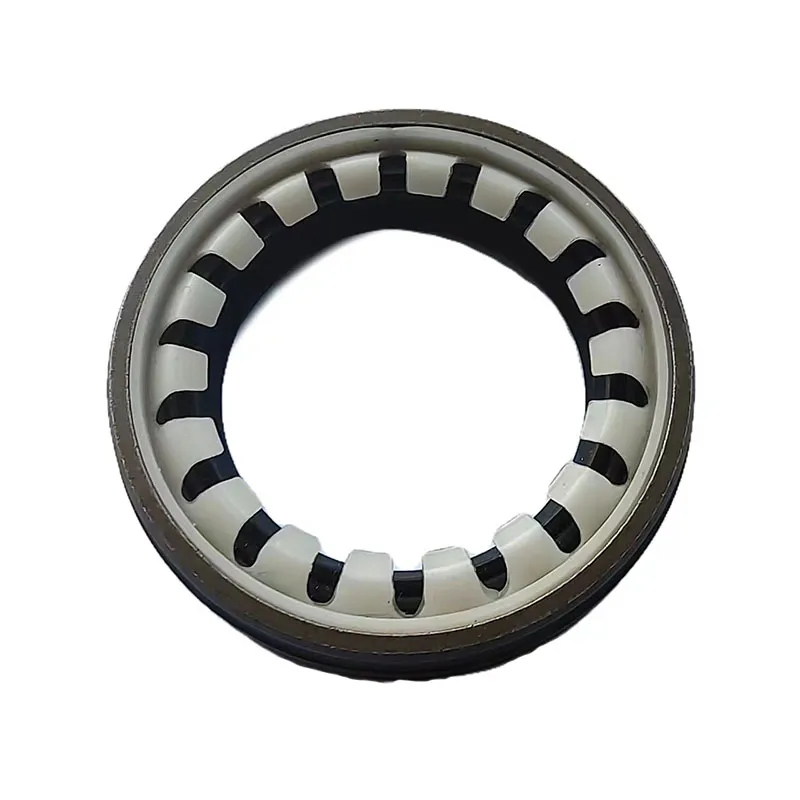o ring oil seal
Understanding O-Ring Oil Seals Importance, Applications, and Selection
O-ring oil seals are crucial components in many mechanical applications, providing effective sealing solutions that prevent leakage of fluids and gases. Their design, material composition, and functionality are essential for ensuring the reliability and efficiency of various systems in automotive, aerospace, industrial machinery, and other sectors.
What are O-Ring Oil Seals?
An O-ring oil seal is a circular sealing element made from elastomeric materials, usually shaped like a torus (a doughnut). This robust design allows them to accommodate different types of motion and create a reliable barrier against the escape of oils, lubricants, and other fluids. The primary function of an O-ring oil seal is to provide a dynamic or static seal between two components, which can be exposed to varying temperature, pressure, and environmental conditions.
The Role of O-Ring Oil Seals in Applications
O-ring oil seals play a critical role in various applications
1. Automotive Industry In vehicles, O-ring oil seals are found in engines, transmissions, and differentials. They prevent engine oil and coolant leaks, contributing to the longevity and performance of automotive systems.
2. Hydraulic and Pneumatic Systems These seals are commonly used in hydraulic cylinders and pneumatic systems to ensure that high-pressure fluids do not leak, maintaining the efficiency of machinery and equipment.
3. Aerospace In the aerospace sector, O-ring oil seals are vital for ensuring the integrity of fuel systems and engine components. They must withstand extreme temperature variations and maintain performance under high-stress conditions.
4. Industrial Machinery In manufacturing processes, machinery relies on O-rings to maintain fluid integrity, minimizing downtime and reducing repair costs caused by leaks.
o ring oil seal

Selecting the Right O-Ring Oil Seal
The selection of an appropriate O-ring oil seal is essential for optimal performance. Several factors should be considered
1. Material O-rings are made from various materials, including nitrile rubber (NBR), fluorocarbon (FKM), silicone, and others. The choice of material depends on the application requirements, such as temperature ranges, chemical exposure, and compatibility with specific fluids.
2. Size and Dimensions The size of the O-ring must match the corresponding groove in the assembly. It’s critical to take accurate measurements to ensure a proper fit that can effectively seal the required space.
3. Environmental Conditions Consideration of the operating environment is key. Factors such as temperature variations, exposure to chemicals, and humidity will influence the choice of material and size.
4. Pressure Requirements O-rings are designed to withstand specific pressure levels. Understanding the maximum and minimum pressure under which the seal will operate is vital for ensuring that it does not become compromised.
5. Dynamic vs. Static Sealing Determine whether the O-ring will be exposed to dynamic motion (e.g., in a piston application) or if it will be installed in a static position (like a flange seal). Different designs may be required for each scenario.
Conclusion
O-ring oil seals are indispensable components across numerous industries, providing reliable sealing solutions that help prevent costly leaks and failures. Understanding the function, applications, and selection criteria for O-ring oil seals is crucial for engineers and technicians involved in designing and maintaining machinery and equipment. By choosing the right materials and specifications, one can significantly enhance the lifespan and performance of systems that rely on these essential sealing devices. With continued advancements in material technology and sealing design, the effectiveness and application of O-ring oil seals will only continue to grow, solidifying their role as a fundamental element in mechanical engineering.
-
Understanding the Front Main Engine Seal: Purpose, Maintenance, and Installation
News Jul.29,2025
-
Understanding O-Rings and Seal Rings: Types, Applications, and Custom Solutions
News Jul.29,2025
-
Understanding Crankshaft Oil Seals: Rear Seals, Pulley Seals, and Their Role in Engine Integrity
News Jul.29,2025
-
The Importance of Front and Rear Crankshaft Seals in Engine Performance and Oil Management
News Jul.29,2025
-
Crank Oil Seals: Functions, Types, and Cost Considerations in Engine Maintenance
News Jul.29,2025
-
A Comprehensive Guide to O-Rings and Seals: Types, Materials, and Global Applications
News Jul.29,2025
-
Mastering Diesel and Performance Engine Maintenance: A Guide to Critical Oil Gaskets
News Jul.28,2025
Products categories















